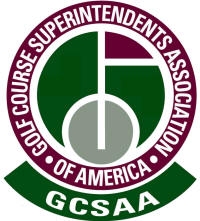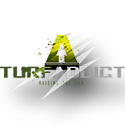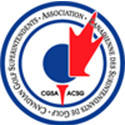Aerification Time Again
Publisher: Golf Course Industry Magazine
Year: July 2009
Title: It’s Aerification Time Again
It’s that time of the year again when aerification cores start flying, the grass doesn’t stop growing, the rain makes scheduling a nightmare and the temperatures start rising.
Aerification is the one cultural practice that superintendents love and equipment technicians hate. It’s the time of the year where we beat up the greens, the mowers and the staff and at about the time when everything heals we do it all over again.
Here are some helpful hints to prepare for aerification as well as to help the healing process during aerification.
One of the biggest challenges most courses face during aerification is downtime. Downtime prolongs the aerification process and costs a lot of money, so begin planning for aerification about a month before. You want to test the machines, order tines and service the machines. While testing, make sure the tines are the correct size, the holes are clean and consistent and you don’t hear any strange noises. You’ll want to record all of the settings so you can ensure they’re used when you start aerification. Also, record anything that goes wrong during aerification. This goes for the machines and the process. It’s an important step because if you can find the things that typically go wrong, then you’ll have an idea of what you need to check or change to minimize problems and allow you to be more efficient in your processes.
Aerification can be a huge expense, as well, so schedule aerifications to minimize spending. For example, don’t plan to grind reels right before aerification starts. Also know how far your tines will go so you can maximize their use. With some machines requiring 60 tines, it can get expensive if they need to be changed out or if you use more expensive tines when they’re not needed to last longer.
Once you aerify you still have to heal. Often, healing time is where you can save money through the communication between superintendent and equipment technician. It’s important technicians know when topdressing will take place and any other cultural practice like verticutting and grooming that can cause sand to be pulled up from the canopy of the plant and moved to the surface. When this occurs it damages mowers and equipment, so technicians need the time to plan accordingly. Remember, solid communication never hurts.
Also, aerification tends to cause scalping on the green until it’s smoothed out again. Remember, every time you put a vehicle on a green after aerification those tracks will have to be smoothed out before the scalping disappears. A few good practices includes rolling the green for the first few weeks after aerification and putting solid rollers on all mowers to ensure the complete green is being rolled smoothly. Using a wiehle roller on a green will not smooth the green out consistently after aerification.
The notion that technicians hate topdressing and aerifying is one of the biggest misconceptions. Over time technicians have learned what aerification is and why it’s needed. The reason why most have issues stems from a general lack of communication, which doesn’t allow them to properly prepare their equipment.
To get the most out of your aerification and to improve efficiency, remember to communicate and go through the proper equipment checks to ensure you’re ready to begin pulling plugs.














0 Comments
No Comments Yet!
You can be first to comment this post!